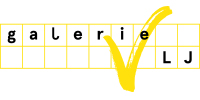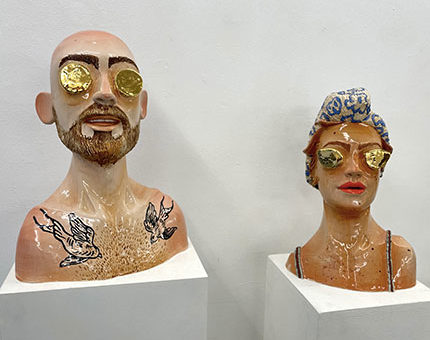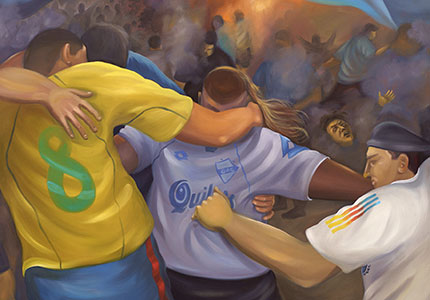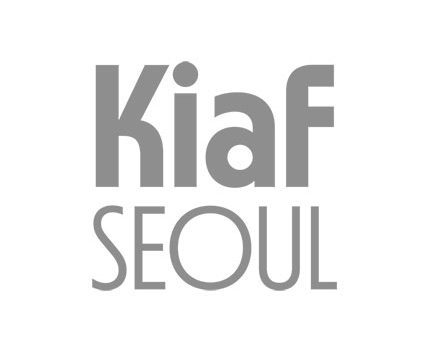13 December 2023

Press Release

VIEWING ROOM
[FR]
Pour conclure l’année 2023, la galerie propose une exposition explorant l’engouement des artistes pour le règne végétal, une source majeure d’inspiration récemment mise à l’honneur dans plusieurs événements en France (“Flower Power” à Giverny, Journées des Plantes de Chantilly parrainées par Jean-Michel Othoniel, “Quand fleurir est un art” au domaine de Chaumont-sur-Loire…). On découvrira à la Galerie LJ les peintures d’Hilary Doyle et les oeuvres murales hybrides de Luján Pérez, à la frontière entre la sculpture, gravure et peinture. Toutes deux utilisent les plantes et la flore comme sujets de fond ou de forme dans leur travail.
Hilary Doyle (née en 1985) est diplômé de la Rhodes Island School of Design (RISD) depuis 2012, et vit dans le Massachussets (USA). Prenant pour point de départ dans sa pratique artistique actuelle les écrits de Merlin Stone (When God Was a Woman, 1978), compilant nombres d’exemples d’art ancien convergeant tous vers une époque où les femmes n’étaient pas seulement égales aux hommes, mais aussi des membres respectés de la société, célébrées et vénérées, Doyle entend rétablir l’honneur des figures mythologiques et des déesses bafouées, diabolisées, ou reléguées au second plan dans l’histoire de l’art. Dans ses peintures elle met à profit le langage des fleurs pour proposer une réévaluation de la représentation de la Femme, par le prisme de la mythologie et d’un discours féministe engagé, partant du principe que l’histoire de l’art a été écrite par les hommes et en offrent donc une vision qu’elle juge aujourd’hui patriarcale.
La nature omniprésente dans le quotidien d’Hilary Doyle trouve un écho ambivalent dans ses peintures: cette végétation autant protectrice qu’étouffante renferme symboles et sens caché dans ses images, qui paraissent à première vue tendres et naïves, où la figure maternelle est omniprésente. A y regarder de plus près, les feuillages dessinent des profils féminins, esquissent des visages. La passiflore, à la composition complexe, fréquemment représentée dans ses peintures récentes, qui est symbole de passion autant que de souffrance ou les lianes qui retiennent de tomber en avant tout autant qu’elles transforment la nature luxuriante en prison, traduisent ainsi une forme d’angoisse dans les peintures d’Hilary Doyle.
Luján Pérez (née à Madrid en 1991) vit et travaille dans l’état de New York (USA) : son atelier, installé dans une grange, y côtoie son immense jardin potager. Elle est diplômée d’un Master en Fine Arts de la New York Academy of Art depuis 2020. Ses oeuvres sont tout à la fois des sculptures murales, des peintures gravées, des gravures sculptées. Tout en explorant la relation entre la terre et l’esprit, Luján Pérez s’intéresse plus particulièrement dans sa pratique actuelle à la représentation du couple telle qu’elle l’est dans la peinture, le cinéma, la photographie, l’art ancien. Forte d’une vaste connaissance des remèdes à base de plantes, elle détourne leur fonction utilitaire pour proposer une seconde lecture de son travail, tel un cadre dans le cadre. Témoignant de sa capacité à examiner et à donner une nouvelle signification aux symboles de la nature, elle associe une plante ou une fleur spécifiquement choisie pour son pouvoir métaphorique, avec chaque image reproduite dans ses oeuvres. Comme dans la peinture ancienne, les fleurs dans les oeuvres de Luján Pérez apportent un éclairage sur la signification de ses images. L’ortie urticante, le ginseng aphrodisiaque, le datura halucinogène, la fleur de kanna psychotrope, ou encore le pouvoir guérisseur de l’érable et du saule, sont autant de symboles employés pour exprimer son point de vue sur la politique, son empathie pour un proche, l’ironie d’une situation, etc.
Les spéculations sur l’amour, la vie et la mort sont des interrogations récurrentes dans le travail de Luján Pérez. Qu’il s’agisse de représentations nostalgiques de la mémoire et de l’inconscient, ou de la création de plantes fictives rappelant autant leur potentiel pouvoir de guérison que leur capacité à tuer, le charme de ses oeuvres réside dans leur capacité à digérer et à révéler ces récits et ces histoires de manière égale.
Au-delà de l’aspect esthétique et poétique, cette exposition a pour vocation de mettre en lumière les messages que les artistes communiquent à travers l’utilisation du motif floral.
[ENG]
To round off the year 2023, Galerie LJ presents an exhibition exploring artists’ enthusiasm for the plant kingdom, a major source of inspiration recently highlighted in several events in France (“Flower Power” in Giverny, Journées des Plantes in Chantilly hosted by Jean-Michel Othoniel, “When Blooming is an Art” at Chaumont-sur-Loire…). Galerie LJ will showcase new paintings by Hilary Doyle and new mixed-media mural works by Luján Pérez that blur the boundaries between sculpture, engraving, and painting. Both artists use plants and flora as subject matters or as symbols in their work.
Hilary Doyle (born in 1985) graduated from the Rhode Island School of Design (RISD) in 2012 and currently resides in Massachusetts, USA. Drawing from the writings of Merlin Stone (When God Was a Woman, 1978) as a starting point in her current artistic practice, which compiles numerous examples of ancient art converging towards a time when women were not only equal to men but also respected members of society, celebrated, and revered, Doyle aims to restore the honor of mythological figures and mistreated, demonized, or sidelined goddesses in art history. In her paintings, she leverages the language of flowers to propose a reevaluation of the representation of Woman through the prism of mythology and feminism, believing that art history has been written by men and thus offers a patriarchal view that she now challenges.
The nature that permeates Hilary Doyle’s daily life finds an ambivalent echo in her paintings: this vegetation, both protective and suffocating, contains symbols and hidden meanings in her images, which may initially appear tender and naive, where the maternal figure is omnipresent. Upon closer examination, the foliage outlines female profiles, sketching faces. The passiflora and its complex composition, frequently depicted in her recent paintings, symbolizes passion as much as suffering, or the vines that prevent falling forward as much as they transform lush nature into a prison, convey a sense of anxiety in Hilary Doyle’s paintings.
Luján Pérez (born in Madrid in 1991) lives and works in the state of New York, USA. Her studio, located in a barn, is surrounded by an extensive vegetable garden, which is no insignificant detail. She holds a Master’s degree in Fine Arts from the New York Academy of Art since 2020. Her works are simultaneously wall sculptures, engraved paintings, and sculpted engravings. While exploring the relationship between earth and spirit, Luján Pérez has been particularly interested over the past few years by the representation of couples, as the epitome of love and hate, through painting, cinema, photography, and ancient art. With a broad knowledge of herbal remedies, she repurposes their utilitarian function to offer a second reading of her work, like a frame within the frame. Demonstrating her ability to examine and give new meaning to nature’s symbols, she associates a specific plant or flower chosen for its metaphorical power with each image represented in her works. Like in ancient painting, the flowers in Luján Pérez’s works shed light on the meaning of her images. The stinging poison ivy, aphrodisiac ginseng, hallucinogenic datura, psychotropic kanna flower, or the healing power of maple and willow, are symbols used to express her viewpoint on politics, her empathy for a loved one, the irony of a situation, etc.
Speculations about love, life, and death are recurring themes in Luján Pérez’s work. Whether it’s nostalgic representations of memory and the unconscious, or the creation of fictional plants that recall their potential for healing as much as their ability to kill, the charm of her works lies in their ability to digest and reveal these narratives and stories equally.
Beyond the aesthetic and poetic aspect, this exhibition aims to highlight the messages that artists communicate through using the power of flowers.










